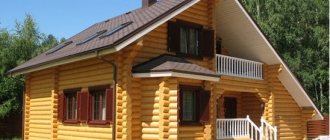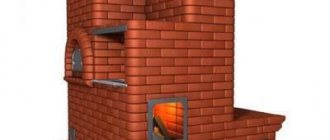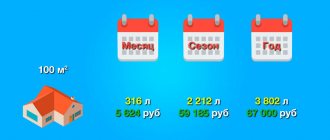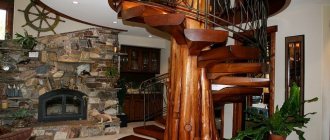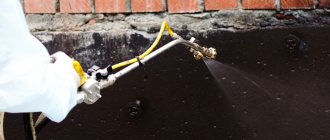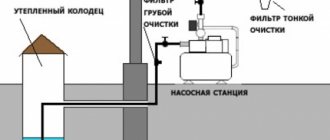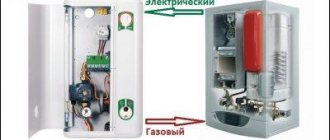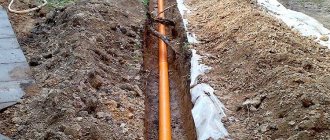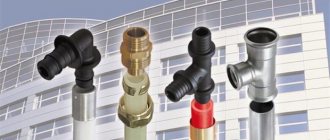Properly organizing home heating is not an easy task. It is clear that specialists - designers and installers - can handle it best. It is possible and necessary to involve them in the process, but in what capacity is up to you, the owner of the house, to determine. There are three options: hired people perform the entire range of activities or part of these works, or act as consultants, and you do the heating yourself.
Regardless of which heating option is chosen, you need to have a good understanding of all stages of the process. This material is a step-by-step guide to action. Its goal is to help you solve the heating installation problem yourself or competently supervise hired specialists and installers.
Heating system elements
In the vast majority of cases, private residential buildings are heated with water heating systems. This is a traditional approach to solving the issue, which has an undeniable advantage - universality. That is, heat is delivered to all rooms using a coolant, and it can be heated using various energy carriers. We will consider their list further when choosing a boiler.
Water systems also make it possible to organize combined heating using two or even three types of energy carriers.
Any heating system, where the coolant serves as the transfer link, is divided into the following components:
- heat source;
- pipeline network with all additional equipment and fittings;
- heating devices (radiators or heating circuits for underfloor heating).
For the purpose of processing and regulating the coolant, as well as performing maintenance work in heating systems, additional equipment and shut-off and control valves are used. The equipment includes the following items:
- expansion tank;
- circulation pump;
- hydraulic separator (hydraulic arrow);
- buffer capacity;
- distribution manifold;
- indirect heating boiler;
- devices and automation equipment.
Note. A mandatory attribute of a water heating system is an expansion tank; other equipment is installed as needed.
It is well known that when heated, water expands, and in a confined space there is nowhere for its additional volume to go. To avoid rupture of connections due to increased pressure in the network, an open or membrane type expansion tank is installed. She takes in excess water.
Forced circulation of the coolant is provided by a pump, and if there are several circuits separated by a hydraulic arrow or a buffer tank, 2 or more pumping units are used. As for the buffer tank, it works simultaneously as a hydraulic separator and a heat accumulator. Separating the boiler circulation circuit from all others is practiced in complex systems of cottages with several floors.
Collectors for coolant distribution are installed in heating systems with heated floors or in cases where a radial battery connection scheme is used, we will discuss this in the following sections. An indirect heating boiler is a tank with a coil where water for domestic hot water needs is heated from the coolant. To visually monitor the temperature and pressure of water in the system, thermometers and pressure gauges are installed. Automation tools (sensors, thermostats, controllers, servos) not only control the parameters of the coolant, but also regulate them automatically.
Scheme "Leningradka"
“Leningradka” is one of the simplest, but nevertheless quite effective and economical heating schemes for wiring a private house. It is similar to a single-pipe scheme, that is, the coolant sequentially passes through all the radiators of the room, gradually losing its heating temperature. The main pipe is placed along the floor and loops the circuit from the heating device. It is best to use Leningradka in one-story houses so that all batteries are on the same level. In this case, the system can operate with natural circulation, but when installing it in two-story houses, it is necessary to use a forced supply of coolant.
The advantages of this scheme are:
- economical consumption of materials;
- easy installation;
- long-term reliable operation;
- the ability to hide the main pipe under the floor covering to improve the aesthetics of the interior.
Leningradka" is not without significant drawbacks:
- inability to maintain the same temperature in all rooms;
- horizontal wiring does not allow connecting heated floors or heated towel rails;
- a large area of the room requires the use of a circulation pump to ensure operating pressure in the system.
Shut-off valves
In addition to the equipment listed, the water heating of the house is controlled and maintained using shut-off and control valves shown in the table:
Once you have become familiar with what elements the heating system consists of, you can proceed to the first step towards the goal - calculations.
Do-it-yourself water heating in a private house
Here you will learn:
Water heating systems are most often used to heat private houses. They are characterized by simplicity, comparative cheapness and high efficiency. If you have direct hands and experience working with tools, nothing prevents you from creating a heating system yourself. With the help of our review, you will learn how to make water heating for a private house with your own hands, the diagrams of which we will provide as illustrative examples.
We will also tell you:
- About the main types of water heating systems;
- About the radiators and materials used;
- About coolant circulation systems;
- About methods of installing pipes and radiators;
- About the choice of heating boilers.
After reading the review, you will be able to draw the appropriate conclusions and create an effective water heating system for a private home with your own hands.
Calculation of the heating system and selection of boiler power
It is impossible to select equipment without knowing the amount of thermal energy required to heat the building. It can be determined in two ways: simple approximate and calculated. All sellers of heating equipment like to use the first method, since it is quite simple and gives a more or less correct result. This is a calculation of thermal power based on the area of heated premises.
They take a separate room, measure its area and multiply the resulting value by 100 W. The energy required for the entire country house is determined by summing up the indicators for all rooms. We suggest a more accurate method:
- by 100 W, multiply the area of those premises where only 1 wall, on which there is 1 window, is in contact with the street;
- if the room is a corner one with one window, then its area must be multiplied by 120 W;
- when a room has 2 external walls with 2 or more windows, its area is multiplied by 130 W.
If we consider power as an approximate method, then residents of the northern regions of the Russian Federation may not receive enough heat, and residents of the south of Ukraine may overpay for equipment that is too powerful. Using the second, calculation method, heating design is carried out by specialists. It is more accurate, as it gives a clear understanding of how much heat is lost through the building structures of any building.
Before you begin the calculations, you need to measure the house, finding out the area of the walls, windows and doors. Then you need to determine the thickness of the layer of each building material from which the walls, floors and roofs are built. For all materials in the reference literature or on the Internet, you should find the value of thermal conductivity λ, expressed in units of W/(m ºС). We substitute it into the formula for calculating the thermal resistance R (m2 ºС / W):
R = δ / λ, here δ is the thickness of the wall material in meters.
Note. When a wall or roof is made of different materials, it is necessary to calculate the R value for each layer and then sum the results.
Now you can find out the amount of heat lost through the external building structure using the formula:
- QTP = 1/R x (tв – tн) x S, where:
- QТП – lost amount of heat, W;
- S is the previously measured area of the building structure, m2;
- tв – here you need to substitute the value of the desired internal temperature, ºС;
- tн – street temperature in the coldest period, ºС.
Important! The calculation should be made for each room separately, alternately substituting into the formula the values of thermal resistance and area for the external wall, window, door, floors and roof. Then all these results must be summed up, this will be the heat loss of the given room. The area of internal partitions does not need to be taken into account!
Heat consumption for ventilation
To find out how much heat a private house loses as a whole, you need to add up the losses of all its rooms. But that’s not all, because we must also take into account the heating of the ventilation air, which is also provided by the heating system. In order not to go into the jungle of complex calculations, it is proposed to find out this heat consumption using a simple formula:
Qair = cm (tв – tн), where:
- Qair – required amount of heat for ventilation, W;
- m – amount of air by mass, defined as the internal volume of the building multiplied by the density of the air mixture, kg;
- (tв – tн) – as in the previous formula;
- с – heat capacity of air masses, is taken equal to 0.28 W / (kg ºС).
To determine the heat demand for the entire building, it remains to add the value of QTP for the house as a whole with the value of Qair. The boiler power is taken with a reserve for the optimal operating mode, that is, with a coefficient of 1.3. Here you need to take into account an important point: if you plan to use a heat generator not only for heating, but also for heating water for domestic hot water supply, then the power reserve must be increased. The boiler must operate effectively in 2 directions at once, and therefore the safety factor must be taken at least 1.5.
Nuances of a two-pipe wiring device
The principle of operation of this system is as follows: it has two equivalent pipelines, with one of them working for supply, and the second for return.
Through the first, the heated coolant moves to the radiators, and through the second, the already cooled coolant moves back to the boiler. The procedure for approving heat supply schemes provides that the amount of work performed with this type of device is quite large, and the requirements for equipment are quite significant. Considering this type of heating system, one cannot help but mention some of its disadvantages:
- expensive installation and high price for consumables;
- long installation process.
Among the advantages of this type of heat supply, it is customary to highlight the following:
- the ability to easily and clearly regulate the functioning of the system;
- ease of control of the design;
- any repair can be carried out directly while the heating system is operating, that is, without turning it off.
In the process of assembling or connecting any of the heating systems described above, it would be useful to seek advice from specialists who can not only help carry out such a procedure as, for example, examination of heating supply diagrams, but also provide various photos of system options and detailed videos on their correct installation and operation.
Heat supply diagram for a private house in the video:
Recommendations for choosing a boiler
At the moment, there are various types of heating, characterized by the energy carrier or type of fuel used. Which one to choose is up to you, and we will present all types of boilers with a brief description of their pros and cons. To heat residential buildings, you can purchase the following types of household heat generators:
- solid fuel;
- gas;
- electrical;
- on liquid fuel.
The following video will help you choose an energy carrier, and then a heat source:
Solid fuel boilers
Solid fuel boilers are divided into 3 types: direct combustion, pyrolysis and pellet. The units are popular due to their low operating costs, because compared to other energy sources, firewood and coal are inexpensive. The exception is natural gas in the Russian Federation, but connecting to it is often more expensive than all the heating equipment including installation. Therefore, wood and coal boilers, which have an acceptable cost, are being purchased by people more and more often.
On the other hand, operating a solid fuel heat source is very similar to simple stove heating. You need to spend time and effort to prepare, carry firewood and load it into the firebox. The unit also requires serious piping to ensure its long-lasting and safe operation. After all, a conventional solid fuel boiler is characterized by inertia, that is, after closing the air damper, the heating of water does not stop immediately. And efficient use of generated energy is possible only if there is a heat accumulator.
Important. Boilers that burn solid fuels generally cannot boast of high efficiency. Traditional direct combustion units have an efficiency of about 75%, pyrolysis units - 80%, and pellet units - no more than 83%.
The best choice in terms of comfort is a pellet heat generator, characterized by a high level of automation and virtually no inertia. It does not require a heat accumulator and frequent trips to the boiler room. But the price of equipment and pellets often makes it inaccessible to a wide range of users.
Gas boilers
An excellent option is to install heating that operates on main gas. In general, hot water gas boilers are very reliable and efficient. The efficiency of the simplest energy-independent unit is at least 87%, and the efficiency of an expensive condensing unit is up to 97%. The heaters are compact, well automated and safe to operate. Maintenance is required no more than once a year, and trips to the boiler room are needed only to monitor or change settings. A budget unit will be much cheaper than a solid fuel unit, so gas boilers can be considered generally available.
Just like solid fuel heat generators, gas boilers require a chimney and supply and exhaust ventilation. As for other countries of the former USSR, the cost of fuel there is much higher than in the Russian Federation, which is why the popularity of gas equipment is steadily declining.
Electric boilers
It must be said that electric heating is the most efficient of all existing ones. Not only are the efficiency of boilers about 99%, but in addition they do not require chimneys or ventilation. There is practically no maintenance of the units as such, except for cleaning once every 2-3 years. And most importantly: equipment and installation are very cheap, and the degree of automation can be any. The boiler simply does not need your attention.
No matter how pleasant the advantages of an electric boiler are, the main disadvantage is just as significant - the price of electricity. Even if you use a multi-tariff electricity meter, you will not be able to beat a wood-burning heat generator in terms of this indicator. This is the price to pay for comfort, reliability and high efficiency. Well, the second disadvantage is the lack of the necessary electrical power on the supply networks. Such an annoying nuisance can immediately cancel out all thoughts about electric heating.
Radiant heating scheme
The radial water heating wiring diagram is newfangled. When using it, hot water is evenly distributed throughout the room through the collector. The degree of heating of the home is regulated by changing the heating of the water and the speed of its movement through the pipes.
It is an improved version of the two-pipe circuit. To distribute the coolant, the same collector is used as in a warm field.
The main advantages of the beam wiring scheme include:
- Jointlessness. There are no joints inside the screed. The likelihood of leakage is significantly reduced
- The ability to turn off each device individually on the collector without harming the entire system
The only drawback is the price. Due to the use of a collector and an additional number of pipes, the price of the system also increases.
Liquid fuel boilers
In terms of the cost of heating equipment and its installation, heating with waste oil or diesel fuel will cost approximately the same as with natural gas. Their efficiency indicators are also similar, although the processing, for obvious reasons, is somewhat inferior. Another thing is that this type of heating can easily be called the dirtiest. Any visit to the boiler room will end with at least the smell of diesel fuel or dirty hands. And the annual cleaning of the unit is a whole event, after which you will be smeared with soot up to your waist.
Using diesel fuel for heating is not the most profitable solution; the price of fuel can hit your pocket hard. Used oil has also risen in price, unless you have some cheap source. This means that it makes sense to install a diesel boiler when there are no other energy sources or, in the future, a main gas supply. The unit easily switches from diesel fuel to gas, but the exhaust furnace will not be able to burn methane.
Heating system diagrams for a private home
Heating systems sold in private housing construction can be single-pipe or double-pipe. It's easy to distinguish them:
- according to a single-pipe scheme, all radiators are connected to one collector. It is both a supply and a return, passing by all the batteries in the form of a closed ring;
- in a two-pipe scheme, the coolant is supplied to the radiators through one pipe and returned through the other.
Choosing a heating system layout for a private home is not an easy task; consultation with a specialist will certainly not hurt. We will not sin against the truth if we say that the two-pipe scheme is more progressive and reliable than the one-pipe one. Contrary to popular belief about the low installation costs when installing the latter, we note that it is not only more expensive than a two-pipe one, but also more complex. This topic is covered in great detail in the video:
The fact is that in a single-pipe system, the water from radiator to radiator cools more and more, so it is necessary to increase their capacity by adding sections. In addition, the distribution manifold must have a larger diameter than the two-pipe distribution lines. And lastly: automatic control with a single-pipe circuit is difficult due to the mutual influence of the batteries on each other.
In a small house or dacha with up to 5 radiators, you can safely implement a single-pipe horizontal circuit (common name - Leningradka). With a larger number of heating devices, it will not be able to function normally, because the last radiators will be cold.
Another option is to use single-pipe vertical risers in a two-story private house. Such schemes occur quite often and work successfully.
With a two-pipe distribution, the coolant is delivered to all radiators at the same temperature, so there is no need to increase the number of sections. Dividing the lines into supply and return makes it possible to automatically control the operation of the batteries using thermostatic valves.
The diameters of the pipelines are smaller, and the system as a whole is simpler. There are the following types of two-pipe schemes:
dead-end: the pipeline network is divided into branches (arms), through which the coolant moves along the highways towards each other;
associated two-pipe system: here the return manifold is, as it were, a continuation of the supply, and the entire coolant flows in one direction, the circuit forms a ring;
collector (radial). The most expensive wiring method: pipelines from the collector are laid separately to each radiator, the installation method is hidden, in the floor.
If you take horizontal lines of larger diameter and lay them with a slope of 3-5 mm per 1 m, then the system will be able to work due to gravity (by gravity). Then a circulation pump is not needed, the circuit will be non-volatile. To be fair, we note that both single-pipe and two-pipe wiring can function without a pump. If only conditions were created for natural water circulation.
The heating system can be made open by installing an expansion tank at the highest point, communicating with the atmosphere. This solution is used in gravity networks, otherwise it cannot be done there. If you install a membrane-type expansion tank on the return line near the boiler, the system will be closed and operate under excess pressure. This is a more modern option, which finds its application in networks with forced movement of coolant.
It is impossible not to mention the method of heating a house with warm floors. Its disadvantage is that it is expensive, since you will need to lay hundreds of meters of pipes in a screed, resulting in a heating water circuit in each room. The ends of the pipes converge to a distribution manifold with a mixing unit and its own circulation pump. An important advantage is the economical, uniform heating of rooms, which is very comfortable for people. Underfloor heating circuits are clearly recommended for use in any residential buildings.
Advice. The owner of a small house (up to 150 m2) can safely recommend adopting a conventional two-pipe circuit with forced circulation of coolant. Then the diameters of the mains will be no more than 25 mm, the branches - 20 mm, and the connections to the batteries - 15 mm.
Gravity system "Spider"
The vertical heating circuit of a private house with a top spill without the use of a circulation pump is called “Spider”. The main advantage is complete autonomy from gas or electricity, which is especially in demand in rural areas or in holiday villages. In the circuit, the coolant moves due to the temperature difference at the inlet and outlet of the heating device. In the absence of gas and electricity, it is best to use a solid fuel boiler.
The operating principle of the “Spider” is based on the laws of physics - hot water rushes upward, displacing cold water downward. As a result of heating, the water rises from the boiler along the riser to the radiator, gives it part of its thermal energy and moves to the next one until it returns back to the boiler. The functioning of the system depends on the accurate selection of pipes and compliance with slopes. Water intake must be carried out above the level of the heat exchangers. The boiler should be located lower. The main disadvantage of the scheme can be considered quite complex installation work .
Heating system installation
We will begin the description of installation work with the installation and piping of the boiler. In accordance with the rules, units whose power does not exceed 60 kW can be installed in the kitchen. More powerful heat generators should be located in the boiler room. At the same time, for heat sources that burn different types of fuel and have an open combustion chamber, it is necessary to ensure a good air flow. A chimney device is also required to remove combustion products.
For natural water movement, it is recommended to install the boiler in such a way that its return pipe is below the level of the ground floor radiators.
The location where the heat generator will be located must be selected taking into account the minimum permissible distances to walls or other equipment. Typically these intervals are specified in the manual supplied with the product. If this data is not available, then we adhere to the following rules:
- passage width on the front side of the boiler is 1 m;
- if there is no need to service the unit from the side or rear, then leave a gap of 0.7 m, otherwise - 1.5 m;
- distance to the nearest equipment – 0.7 m;
- when placing two boilers next to each other, a passage of 1 m is maintained between them, and opposite each other - 2 m.
Note. When installing wall-mounted heat sources, side passages are not needed; you only need to maintain clearance in front of the unit for ease of maintenance.
Systems with two boilers
If it is necessary to organize heating of the coolant in a closed circuit from two heat generators, use the parallel connection principle. Let us explain the algorithm for the joint operation of two boilers - electric and solid fuel (the piping is shown in the figure):
- The main heat source is a TT boiler, connected in the standard way through a three-way valve. To prevent flows from looping in the other direction, a check valve is installed on each branch.
- When a stack of firewood burns out, the air in the house begins to cool. The temperature drop is detected by the room thermostat and starts the electric boiler with a pump.
- A decrease in the temperature in the supply line of the TT boiler to 50-55 °C causes the overhead thermostat to turn off the circulation pump of the solid fuel circuit.
- After the next loading of firewood, the supply pipe heats up, the temperature sensor starts the pump and heating priority returns to the solid fuel unit. The room thermostat no longer turns on the electric boiler because the air temperature does not drop.
It is also necessary to install a safety group at the output of the electric boiler; it is not shown in the figure.
An important point. The above-described piping option can be used for any pair of boilers. When installing a wall heater, a second pump is not installed.
Two heat generators, for example, gas and electric, are easily connected through a heat accumulator. The turning on and stopping of both boilers can be organized in various ways - by the temperature of the water in the tank, by time using a timer. Check valves are not needed here.
If it is necessary to connect 2-3 units of thermal power equipment with several heating circuits, it is better to assemble a diagram of primary / secondary rings. The principle is as follows: all heat sources and consumers with their pumps are connected to a common ring made of a pipe of increased diameter Ø26...40 mm (depending on the number of branches). Circulation inside the ring is provided by a separate pump.
The order of equipment installation matters: the water heater receives the hottest coolant, followed by the batteries, and finally the TP (along the water flow)
In a system with natural coolant movement, two boilers are also combined in parallel. Here it is important to withstand slopes of pipes Ø40...50 mm, and also to avoid sharp turns, using bends at an angle of 45° or bends with a large bend radius.
The water diverges along two parallel branches with boilers. But the unit that is currently turned on will make it move by gravity; the pump starts at the request of the owner
Advice. A series connection of 2 units has a right to life, but it is better not to use such a connection. Water heated in the first boiler will pass through the cold heat exchanger of the second and will certainly lose some of the heat.
Boiler connection
It should be noted that the wiring of gas, diesel and electric heat generators is almost the same. Here we must take into account that the vast majority of wall-mounted boilers are equipped with a built-in circulation pump, and many models are equipped with an expansion tank. First, let's look at the connection diagram for a simple gas or diesel unit:
The figure shows a diagram of a closed system with a membrane expansion tank and forced circulation. This tying method is the most common. The pump with a bypass line and a sump tank is located on the return line, and there is also an expansion tank there. The pressure is controlled using pressure gauges, and air is removed from the boiler circuit through an automatic air vent.
Note. Piping an electric boiler that is not equipped with a pump is carried out according to the same principle.
When the heat generator is equipped with its own pump, as well as a circuit for heating water for domestic hot water needs, the pipe layout and installation of elements is as follows:
Shown here is a wall-mounted boiler with forced air injection into a closed combustion chamber. To remove flue gases, a double-walled coaxial flue is used, which is led out horizontally through the wall. If the firebox of the unit is open, then you need a traditional chimney with good natural draft. How to properly install a chimney pipe made of sandwich modules is shown in the figure:
In country houses with a large area, it is often necessary to connect a boiler with several heating circuits - a radiator, heated floors and an indirect heating boiler for DHW needs. In such a situation, the optimal solution would be to use a hydraulic separator. It will allow you to organize independent circulation of coolant in the boiler circuit and at the same time serve as a distribution comb for the remaining branches. Then the basic heating diagram for a two-story house will look like this:
According to this scheme, each heating circuit has its own pump, thanks to which it operates independently of the others. Since coolant with a temperature of no more than 45 ° C should be supplied to heated floors, three-way valves are used on these branches. They add hot water from the main line when the temperature of the coolant in the heated floor circuits drops.
With solid fuel heat generators the situation is more complicated. Their strapping should take into account 2 points:
- possible overheating due to the inertia of the unit; the firewood cannot be extinguished quickly;
- formation of condensation when cold water enters the boiler tank from the network.
To avoid overheating and possible boiling, the circulation pump is always placed on the return side, and on the supply side there should be a safety group located immediately behind the heat generator. It consists of three elements: a pressure gauge, an automatic air vent and a safety valve. The presence of the latter is crucial; it is the valve that will relieve excess pressure when the coolant overheats. If you decide to heat your house with wood, then the following wiring diagram is required:
Here, a bypass and a three-way valve protect the furnace of the unit from condensation. The valve will not allow water from the system into the small circuit until the temperature in it reaches 55 °C. Detailed information on this issue can be obtained by watching the video:
Advice. Due to the nature of their operation, solid fuel boilers are recommended to be used in conjunction with a buffer tank - a heat accumulator, as shown in the diagram:
Many homeowners install two different heat sources in the furnace room. They must be properly tied and connected to the system. For this case, we offer 2 schemes, one of them is for a solid fuel and an electric boiler working together with radiator heating.
The second scheme combines a gas and wood heat generator, supplying heat to heat the house and prepare water for hot water supply:
Options for piping gas heaters
Strict regulatory requirements apply to the installation and connection of gas boilers:
- the ceiling height of the combustion room is not lower than 2 m, the minimum volume is 8 m³ with equipment power up to 60 kW;
- in the boiler room, supply and exhaust ventilation is required (three times air exchange + additional inflow for combustion), a window is required in the kitchen;
- before attaching the wall-mounted model of the heat generator, the wooden structure must be protected with a sheet of metal;
- the minimum width of the passage on the front side of the unit is 1 m, the side passage is 60 cm, the distance from the wall to the body is 3 cm;
- the length of the horizontal supply to the main chimney is a maximum of 3 m, the diameter of the pipe is equal to or greater than the cross-section of the heater outlet pipe.
Note. Compliance with these requirements is controlled by the gas supplier company, which gives permission to connect the water heating device to the main line. When installing autonomous heating from a gas tank, the installed fuel supply system is put into operation by the appropriate service.
There are no strict requirements for connecting a gas boiler to a water heating system; the circuit must ensure efficient and safe operation of the unit. Control services do not check the correct connection to radiators or underfloor heating (HF) in a private house; the responsibility lies entirely with the performer of the work.
Connecting a wall-mounted boiler
It is much easier to tie a suspended model of a gas heat generator than a floor-standing one. These units are ready-made boiler rooms in miniature, equipped with the necessary equipment:
- circulation pump;
- expansion tank;
- a safety group consisting of a safety valve, a pressure gauge and an automatic float air vent;
- double-circuit versions are equipped with an additional or combined bithermal heat exchanger that heats water for domestic hot water needs.
Wall-mounted mini-boiler room with a closed combustion chamber and forced air supply from a fan
Reference. Single-circuit “wall units” are often equipped with a special pipe for connection to the heating coil of the storage boiler. An electric three-way valve installed inside the housing switches heating/DHW modes at the command of the controller receiving thermostat signals.
For normal operation and ease of maintenance of the wall heater, observe the following rules:
- All communications connected to the boiler must be quickly shut off if necessary. Solution: we install ball valves on the inlet and outlet (gas, water) pipes of the unit, as shown in the photo.
- We install a filter into the heating return line - a mud filter, which prevents sand from getting into the heat generator from the system. We place the element horizontally, with the “spout” with the plug facing down; in another position, cleaning the mesh is difficult.
- A similar mud trap should be used on the cold water supply branch connected to a double-circuit device.
- At the lowest point of the heating network we install a make-up fitting from the water supply. Before inserting into the main line, we install a shut-off valve and a spring-type check valve. The organization of recharge is described in more detail in our step-by-step instructions.
Typical piping of a wall-mounted version of a boiler with two circuits - heating and hot water.
Communications to the heat generator can be carried out with any plastic pipes - soldered from polypropylene, assembled from metal-plastic or cross-linked polyethylene. There is no threat of emergency overheating to these pipelines. Above is a typical wiring diagram for a gas double-circuit boiler with a radiator network, hot water supply and water supply.
Note. All suspended heaters - atmospheric, turbocharged, condensing - are designed to work with a closed system. For a heating network with natural water circulation, you will need a floor-standing, non-volatile boiler.
A single-circuit unit is connected according to a similar scheme, but without water supplies. More details about the correct connection of the “wall connector” are described in the video.
In country cottages with a large area (over 200 m²) with 3-6 heating circuits, a hydraulic arrow is installed or a scheme of primary/secondary rings is assembled, described at the end of this publication.
Connection to an indirect heating boiler
If the wall-mounted heat generator is equipped with a pipe for connecting a storage tank, then the piping is carried out according to the previous diagram, only 1 joint with a ball valve is added. Since cheap versions of boilers do not have such a fitting (and a switching valve inside), use the diagram shown in the drawing below.
To connect a simple single-circuit heater with a stationary DHW boiler, purchase a three-way solenoid valve and a mechanical thermostat with an immersion sensor inserted inside the corresponding tank sleeve. How does this connection work:
- Heating priority is always on the boiler side. While the temperature sensor detects an insufficiently high temperature of the container (adjusted manually), all the coolant is directed to the heating coil.
- When the water reaches the required temperature, the overhead sensor will notify the boiler controller, which will start the valve servomotor and switch the coolant flow to the radiators or underfloor heating circuits.
- As water is drawn from the container or cools naturally, the temperature of the water in the tank decreases. The thermocouple signals the electronic unit of the boiler, the valve again transfers the coolant to the boiler.
If the unit does not have a “brains” - an electronics unit, the drive is connected using the TT boiler method
Reference. A heat generator, correctly selected in terms of power, heats the hot water tank in 15-25 minutes. The burner operates at maximum mode.
Schemes for floor heat generator
The main difference between the piping of a stationary boiler and a wall-mounted one is the addition of auxiliary elements that are not initially included in its design:
- circulation pump - set it to supply or return, there is no difference;
- For trouble-free removal of the pump, we provide 2 taps on the sides;
- We connect the expansion membrane tank to the return line, and we also install cut-off valves on the supply line;
- immediately at the outlet of the heater we install a separate safety group without any taps.
We use the remaining parts of the piping - taps, mud traps - according to the diagram. We immediately decided to show the connection of a double-circuit floor-standing unit, so as not to make several identical pictures.
The pump can be installed both in the supply and return pipelines
Comment. There are floor-standing boilers of imported origin (for example, Protherm), equipped like wall-mounted units - an expansion tank, a pump, a safety valve and even a built-in boiler. Such heat generators are connected in a similar way to hanging boilers and can only operate in a closed system with excess coolant pressure.
The simplest floor-standing models with mechanical gas automation are not included in the house electrical network and are connected to a gravity (gravity) water heating system according to a similar scheme. What is the difference:
- diameter of connected lines – 40…50 mm (internal);
- pipes are brought to the unit with a slope of 3-5 mm per 1 meter of length;
- an open-type expansion tank is used, installed at the highest point - on the supply riser;
- the auxiliary pump is mounted on the bypass along with a sump tank and shut-off valves.
On the main lines you will have to use large-diameter taps - DN40 or DN50.
It is pointless to install a safety group in an open system - the excess pressure in the network is zero, the pressure gauge will not show anything, and the relief valve will never work. The air vent is also useless - bubbles escape into the atmosphere through the expansion tank during the filling process.
If it is necessary to connect TP circuits and radiators to an attached unit, the system is divided into 2 branches. The distribution manifold for underfloor heating is connected to one, and the radiator network to the second.
In a small building, TP loops can operate without a mixing unit and an additional pump - the temperature in the loops is maintained by RTL thermal heads
Recommendations for the selection and installation of pipes
To install the heating of a private house with your own hands, you first need to decide which pipes to choose for this. The modern market offers several types of metal and polymer pipes suitable for heating private homes:
- steel;
- copper;
- stainless steel;
- polypropylene (PPR);
- polyethylene (PEX, PE-RT);
- metal-plastic.
Heating lines made of ordinary “ferrous” metal are considered a relic of the past, since they are most susceptible to corrosion and “overgrowth” of the flow area. In addition, it is not easy to independently install such pipes: you need good welding skills to make a hermetically sealed joint. However, some homeowners still use steel pipes to this day when they install autonomous heating at home.
Copper or stainless steel pipes are an excellent choice, but they are too expensive. These are reliable and durable materials that are not afraid of high pressure and temperature, so if you have the means, these products are definitely recommended for use. Copper is joined by soldering, which also requires some skills, and stainless steel is joined using dismountable or press fittings. Preference should be given to the latter, especially when the installation is hidden.
Advice. For piping boilers and laying pipelines within the boiler room, it is best to use any type of metal pipes.
Heating made from polypropylene will cost you the cheapest. Of all types of PPR pipes, you need to choose those that are reinforced with aluminum foil or fiberglass. The low price of the material is their only advantage, since installing heating from polypropylene pipes is quite a complex and responsible task. And in appearance, polypropylene is inferior to other plastic products.
The joints of PPR pipelines with fittings are made by soldering, and it is not possible to check their quality. When the heating was insufficient during soldering, the connection will certainly leak later, but if it is overheated, the melted polymer will half block the flow area. Moreover, you won’t be able to see this during assembly; flaws will make themselves known later, during operation. The second significant drawback is the large elongation of the material during heating. To avoid “saber” bends, the pipe must be mounted on movable supports, and a gap must be left between the ends of the line and the wall.
Recommendation. Do not embed polypropylene products into floor screeds or wall strobes. This is especially true for pipe joints.
It is much easier to make your own heating from polyethylene or metal-plastic pipes. Although the price of these materials is higher than polypropylene. For a beginner, they are the most convenient, since the joints here are made quite simply. Pipelines can be laid in a screed or wall, but with one condition: connections must be made using press fittings, not collapsible ones.
Metal-plastic and polyethylene are used both for open laying of highways and hidden behind any screens, as well as for the installation of water-heated floors. The disadvantage of PEX pipes is that it tends to return to its original state, which can cause the installed heating manifold to appear slightly wavy. PE-RT polyethylene and metal-plastic do not have such a “memory” and easily bend as you need. More information about choosing pipes is described in the video:
Main types of heating
The difference between all existing systems depends on different criteria. Installation location, heating area, technical features of wiring and installation. In frequent cases, the type of structure is influenced by the method of energy supply and, of course, the total cost of the entire complex responsible for heating a private house. Modern energy-saving technologies offer a wide selection of different heating systems using advanced developments. This article presents popular, common types of heating systems used in almost every home.
Water heating
Among all the options, heating using liquid (water) as a coolant is considered the most popular. The advantages of the classic type of water heating have been revealed during many years of use. The technical characteristics of the system allow its operation in various conditions. Both in industrial buildings and in private sector buildings, apartments, offices. All this can be done with your own hands. Main advantages:
- Same temperature in all rooms.
- Length of service life.
- Possibility of using different materials of pipes and hardware (polypropylene, metal).
- Quiet operation.
- Fuel saving, easy maintenance.
The individual design elements of this option are an electric, multifunctional or gas boiler. Coal boilers are also used. With their help, water is heated and distributed through pipes (closed circulation) to the batteries. This is how the heat of the heated liquid is transferred to the premises. For ease of use, several subtypes are used. We'll talk about them below.
Air heating
This type of heating was known and used in ancient times. Heated air was supplied into the room using an air duct system, thereby heating it. In its modern version, this is a common method of heating large areas. Until recently, it was used only in production workshops, sports facilities, and public spaces. But the development of modern technologies makes it possible to use the air method in private homes.
Heating and supply of air mass to the premises is carried out by air heaters. In large workshops, these are special installations that provide heating and constant circulation of air at a certain temperature. The local option involves the use of low-power air heating devices. Usually these are heat guns and fan heaters. The devices are quite mobile and use various construction methods (electric heaters, fuel burners, etc.) as the main heater.
The operation of air heating requires strict adherence to fire safety rules and basic hygiene requirements. The second provides for the presence of air purification filters, flow ventilation, air ducts, air curtains and other elements. As well as constant control over the air duct system as a whole.
Heating based on electricity
This type of heating works on the principle of converting electrical energy into heat. The main source of heat is an electric boiler or various heating devices (appliances). Boilers are used in water systems and are considered an environmentally friendly heating method. Individual devices have their own designs:
- Electric convectors.
- Air curtains.
- Oil radiators with heating elements.
- Infrared emitters (UVR), heated floors.
- Fan heaters, heat guns.
The use of different modifications depends on the installation location, heating area, and operating conditions. Electric convectors and oil radiators are well suited for heating apartments or private houses. This applies to UV devices and heated floors. All of the above methods are economical (subject to an affordable price for electricity) and do not require the use of several types of energy resources; only electricity can be used.
Recommendations for choosing and connecting radiators
An ordinary homeowner, going to a heating equipment store and seeing a wide selection of different radiators there, can conclude that choosing batteries for his home is not so easy. But this is the first impression; in fact, there are not so many varieties of them:
- aluminum;
- bimetallic;
- steel panel and tubular;
- cast iron
Note. There are also designer water heating devices of a wide variety of types, but they are expensive and deserve a separate detailed description.
Sectional batteries made of aluminum alloy have the best heat transfer rates; bimetallic heaters are not far behind them. The difference between the two is that the former are made entirely of alloy, while the latter have a tubular steel frame inside. This was done for the purpose of using the devices in centralized heat supply systems of high-rise buildings, where the pressure can be quite high. Therefore, installing bimetallic radiators in a private cottage makes no sense at all.
It should be noted that heating installation in a private home will be cheaper if you purchase steel panel radiators. Yes, their heat transfer rates are lower than those of aluminum ones, but in practice you are unlikely to feel the difference. As for reliability and durability, the devices will successfully serve you for at least 20 years, or even more. In turn, tubular batteries are much more expensive, in this respect they are closer to designer ones.
Steel and aluminum heating devices have one useful quality in common: they lend themselves well to automatic control using thermostatic valves. The same cannot be said about massive cast iron batteries, on which it is pointless to install such valves. This is due to the ability of cast iron to heat up for a long time and then retain heat for some time. Also because of this, the rate of heating of the premises is reduced.
If we touch on the issue of appearance aesthetics, then the cast-iron retro radiators currently offered are much more beautiful than any other batteries. But they also cost incredible amounts of money, and inexpensive Soviet-style accordions MS-140 are only suitable for a one-story country house. From the above, the conclusion suggests itself:
For a private home, buy those heating devices that you like best and are comfortable with in terms of cost. Just take into account their features and choose the right size and thermal power.
Water electric heating
If you use electric heating of a private house with your own hands, the circuit connection diagrams are described above.
An electric boiler can be designated as the main source of heat or as a backup if the house already has a heating source, for example a gas boiler. An electric boiler consumes significant power, so the wiring cross-section must correspond to the current consumed. It is not at all necessary to make reinforced wiring throughout the house; it is enough to lay a suitable cable from the meter to the boiler. Since an electric boiler is a device that heats water, a closed system or a gravity heating system for a private house will work with it, using a standard scheme. Pipeline diagrams are no different from the diagrams described above. To create electric heating, three types of electric boilers are used:
- electrode;
- induction;
- boiler using heating elements.
It is believed that a heating element boiler that has stood the test of time is more reliable. It is advisable to fill the system with softened water so that there is less scale on the heating elements. Electric boilers have high efficiency, but the main obstacle to their widespread use is the rising price of electricity.
- How to fill water into an open and closed heating system?
- Popular floor-standing gas boiler made in Russia
- How to properly bleed air from a heating radiator?
- Expansion tank for closed heating: device and principle of operation
- Gas double-circuit wall-mounted boiler Navien: error codes for malfunctions
Recommended reading
Do-it-yourself water heating of a private house: diagrams and necessary materials Do-it-yourself air heating of a private house is a profitable and effective solution How to correctly calculate heating in a private house? How and from what are homemade home heating products made?
2016–2017 — Leading heating portal. All rights reserved and protected by law
Copying site materials is prohibited. Any copyright infringement will result in legal liability. Contacts
Selection by power and methods of connecting radiators
The number of sections or the size of a panel radiator is selected based on the amount of heat required to heat the room. We have already determined this value at the very beginning; it remains to reveal a couple of nuances. The fact is that the manufacturer indicates the heat transfer of the section for a temperature difference between the coolant and the air in the room equal to 70 °C. To do this, the water in the battery must warm up to at least 90 ° C, which happens very rarely.
It turns out that the real thermal power of the device will be significantly lower than that indicated in the passport, because usually the temperature in the boiler is maintained at 60-70 ° C on the coldest days. Accordingly, for proper heating of the premises, the installation of radiators with at least one and a half heat transfer margin is required. For example, when a room needs 2 kW of heat, you must take heating devices with a capacity of at least 2 x 1.5 = 3 kW.
Indoors, batteries are placed in places of greatest heat loss - under windows or near blank external walls. In this case, connection to highways can be done in several ways:
- lateral one-sided;
- diagonal scalene;
- lower - if the radiator has appropriate pipes.
The lateral connection of the device on one side is most often used when connecting it to risers, and the diagonal connection to horizontally laid highways. These 2 methods allow you to effectively use the entire surface of the battery, which will heat evenly.
When a single-pipe heating system is installed, the lower versatile connection is also used. But then the efficiency of the device decreases, and hence the heat transfer. The difference in surface heating is illustrated in the figure:
There are models of radiators where the design provides for connection of pipes from below. Such devices have internal wiring and, in fact, they have a one-sided side circuit. This can be clearly seen in the figure, where the battery is shown in section.
A lot of useful information on the issue of choosing heating devices can be found by watching the video:
Features of heating circuits
The optimal coolant for a two-story private building is water.
However, the design of water heating schemes differs:
- type of wiring - top or bottom;
- number of pipes - one-pipe system or two-pipe;
- riser location - vertical or horizontal;
- circulation - forced or natural;
- coolant movement - dead-end or main.
For heating a private house, a scheme with natural circulation is considered optimal. The number of floors of the heated building does not matter in this case. The main thing is to choose the right place where the expansion tank will be located.
For full operation of the system with natural circulation, the tank must be located at the highest point of the building - in the attic or on the second floor.
Thanks to this placement of the tank, the coolant moves from top to bottom, ensuring uniform heating of the radiators, and, accordingly, the air in the rooms.
Photo:
The required direction of movement of the coolant is possible, provided that the pipes are laid at an angle.
In addition, as you approach the boiler, the diameter of the pipes through which the coolant flows back must expand.
The main advantages of a natural circulation system: independence from power supply, simplicity and reliability of operation, absence of noise.
The main disadvantages of a natural circulation system:
- complex installation associated with laying pipes at an angle;
- lack of pressure to heat large areas;
- depending on the direction of movement of the coolant, a temperature difference is observed, which negatively affects the operation of the tank;
- oxygen contained in the coolant contributes to the internal destruction of the system with natural circulation;
- it is necessary to control the coolant level, adding it as it evaporates, which leads to the formation of scale on the inner surface of the pipes.
An alternative to a heating system with natural circulation of coolant is a forced circulation scheme.
Choosing a coolant
It is well known that filtered and, if possible, desalted water is most often used for this purpose. But under certain conditions, for example, periodic heating, water can freeze and destroy the system. Then the latter is filled with a non-freezing liquid - antifreeze. But you should take into account the properties of this liquid and do not forget to remove all regular rubber gaskets from the system. Antifreeze quickly causes them to become limp and leaks occur.
Attention! Not every boiler can work with non-freezing liquid, which is shown in its technical data sheet. This must be checked when purchasing it.
As a rule, the system is filled with coolant directly from the water supply through a make-up valve and a check valve. During the filling process, air is removed from it through automatic air vents and manual Mayevsky taps. In a closed circuit, pressure is monitored using a pressure gauge. Usually when cold it is in the range of 1.2-1.5 Bar, and during operation it does not exceed 3 Bar. In an open circuit, it is necessary to monitor the water level in the tank and turn off the replenishment when it flows out of the overflow pipe.
Antifreeze is pumped into a closed heating system using a special manual or automatic pump equipped with a pressure gauge. To ensure that the process is not interrupted, the liquid must be prepared in advance in a container of appropriate capacity, from where it must be pumped into the pipeline network. Filling an open system is easier: antifreeze can simply be poured or pumped into the expansion tank.
